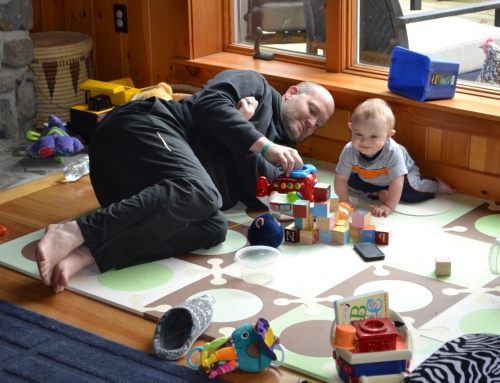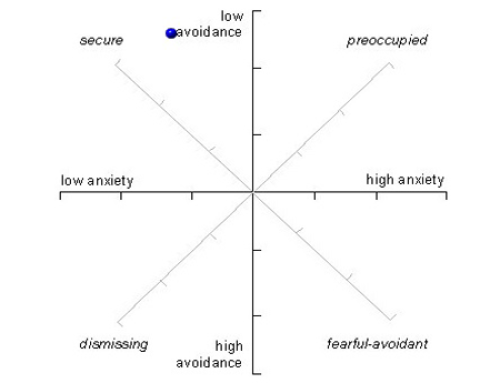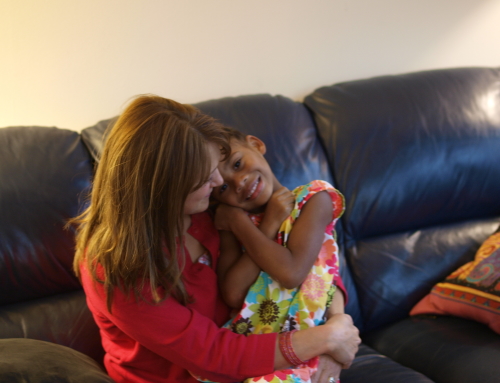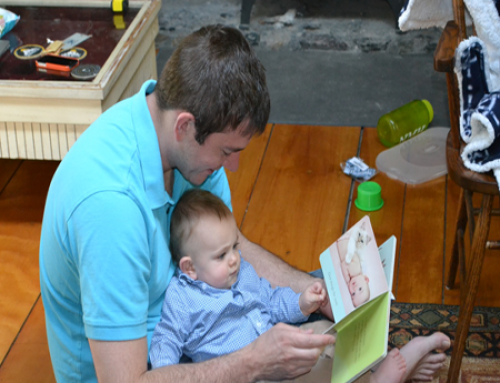The brain works differently when it has had high stress over a long period of time. Here are tips for working with people in a brain-savvy way.
High Stress influences brain functioning. These changes are described as executive dysfunction, which influences:
processing loads (how much the brain can handle until it gets “full,”
verbal memory, (retaining information given verbally),
working memory (the brain’s short-term chalkboard),
generalizing ability (applying information from one situation to another),
initiating (“getting going” or “when to start”),
and organizing and planning.
1. Use this format when giving information:
A. Overview—What is the issue, or “big picture?”
B. Show how details fit in the “big picture.”
C. Summarize.
This helps the brain to organize incoming information in a meaningful way.
2. Ask what parts people “get.” What parts don’t they “get” Wait until they respond. (Do not start from the beginning, explaining information all over again.)
3. Ask people to tell you when their brains are “full.” People have processing loads that need respected. Take a stretch break when brains are full.
4. Use visuals, especially when people need to make choices. Do not expect people to hold a verbally transmitted idea in their memories while comparing to another verbally described choice. Use visuals so they do not have to rely on auditory memory or auditory processing. Have them take the visuals with them, if possible. Our visual cortex is better at handling multiple streams of information. Visuals will help people to “hold” an idea while comparing to another choice.
5. Limit words. Seven word sentences are ideal.
6. Speak more slowly.
7. Use ample white space on printed pages.
8. Have “start” and “finish” markings on pages. Consider color coding. (Put “rules and regulations” on the back of pages so forms are not so complex.)
9. Work a sample with them, for example: math problems, medical forms, or applications. Show an example of completed forms.
10. Remember the body. Allow for drinks and stretches. Keep your body relaxed when you are working with stressed people. Stress regulation is always improved when people are working with a person with good stress regulation.
Working with Highly Stressed People
Stress is a necessary part of life. Our bodies respond to stress by producing a burst of stress hormones. The hormones give us the energy and urge to mobilize, to solve problems, and to respond physically to a stressor. Examples of stress hormones that work to our benefit are: studying hard for exams, providing first aid to people in emergencies, or fixing homes and property after a bad storm. When stress is non-stop, we actually find that it damages us. It impacts our memory, our ability to understand complicated information, our ability to organize, and our ability to find words for what we need. Because of the impact of stress, people often find it difficult to communicate with stressed family members. The following is a guide to communication with stressed people. It is applicable for both children and adults.
1. Challenge–Brain changes occur, making it difficult to remember things or to organize life.
Brain changes may include: impulsivity, seeing details and missing the big picture, problems organizing, difficulty with complexity, inability to screen out noise, and limits on how much information the brain is able to process.
Responses:
Number events. For example, in speaking to children we might say, “There are 3 things that we do to finish.
#1 is ___,
#2 is ___,
and
#3 is ___.
What is number 1?”
Child responds.
The parents says. “Great. Let’s start.”
In speaking to an adult we would say, “There are 3 things to do in the next 15 minutes before we leave. First, I want you to get the folder for the meeting.
Second, I want us both to get coats and keys.
Third, I will put the dog in.
Will you please get papers for the meeting now?”
Initiating is part of executive functioning. When to start becomes a moving target—and tremendous source of frustration for everyone. Set a time for starting. “What will be the time to do X?” Let the person set the time if at all possible.
Use raised fingers to help with counting. Got example, there are 4 things that we need to do in the morning before school. Put up 4 fingers. Name the items. Then put up number one, saying, “Start.” The visual cues help.
List daily schedules. Use visuals for small children. Put in time for free time or choice.
Put in time on the daily schedule for talking or problem-solving. Teach the brain to defer worry and to schedule problem-solving.
Speak simply. Use shorter sentences. Speak more slowly. Put the subject and verb in that order. Shared stress often causes the caregiver or family member to talk too much. Do not become the irritating wallpaper for an overwhelmed person.
Maintain a predictable and organized home. Limit commotion in the home. Reduce variables, like overnight guests, transitions, traveling, changing daily schedules.
Give breaks in the day for exercise or goofing off. The stressed person has more need to “run off” or “work off” high stress. Some need naps. Provide time for these breaks.
2. Challenge: The person ignores or forgets requests that are given in a normal tone with a normal amount of emotion.
Responses:
Set limits, enforce limits, but do it calmly. Resist adding your emotion to their organizational problems. Big emotional displays may work in the short-term to get the attention of the anxious person, but over time create even more anxiety in work, home, and relationships.
Create written memos as reminders. Computer-based reminders or cell phone reminders work well.
Normalize their experience. Important message are: “Right now you seemed stressed. It is normal for any of us under stress to forget or tune out. I do not want to nag you. If there is something important, how should we handle reminders? See if the person has ideas. If not, suggest two. Let the person chose one. For example, a teen asked if he could create a checklist. Another teen put a reminder on her cell phone calendar.
Notice and comment on times that the person remembers. Help them to see their increasing mastery of daily demands.
3. Challenge: Stress Makes the Person Harder to Connect with.
Response:
Create times for connection. Meals are an excellent time to connect. Talk about favorite foods, recipes, and tastes. It helps the person to enjoy life.
In a family situation consider getting a dog if you struggle to find things in common. You can always talk about the dog. Also, dogs are a good antidote for low mood.
Increase positive looping: back-and-forth conversations that are completely positive.
Make zones of time that are completely positive. For example, homework, jobs, chores are off-limits during mealtimes or in the car.
Touch the person positively if they permit this.
Value the person’s friends, making them welcome.
Lie down with the person when talking, if this is appropriate for the age, sex, relationships. Nest. It is comfortable to speak when both are stretched out on the bed, or on the couch and an easy chair.
Have times that you are sitting and easily available (not tensely lurking). T.V. computer, or cell phone texting does not signal that you are “available.”
Look for topics that are common to you and the stressed person. This might be singers, sports, paintball, the pyramids, ancient peoples, etc.
Include a mix of ideas for family projects. Elicit the stressed person’s ideas and be sure to incorporate them. (Often there is a sour, first reaction, followed by positive involvement.)
Elicit the person’s world view. Do not argue with it, but show curiosity and interest in how they came to that point of view. Talking aloud will help the person examine their own thinking.
When the stressed person withdraws, do not withdraw in turn. You can conclude. “It seems that you are done talking right now. I hope that we can talk again some time.”
Do not pretend to connect when you are not able to connect with the person. Work at connecting, but avoid being artificially “happy-acting.” It feels false and awkward.
4. Challenge: Person loses a sense of hope or perspective
Response:
Maintain hope. If you are not on a positive course, hold fast to the notion that you will find resources that will give you hope.
Qualify negativity while extending empathy. “It seems that you have kind of given up right now. I have not. However, I can accept that things seem bleak right now. I am so sorry.”
Do not exaggerate the differences between you and the stressed person by saying, “I do X and therefore (do so much better than you).” The person is already feeling hopeless. It is easier to say, “it seems that you feel that nothing will help right now. Most of us go through times like that.” Later, you can ask if the person wants some ideas about how things could change. Or, “Let me know if you want to talk about this further.”
Help the person generate their own ideas and perspectives when in relationship dilemmas. Do not tell the person what to do. Do allow them the chance to discuss pros and cons.
5. Challenge: Person lacks or has difficulty with self-skills. Self skills are: putting things into perspective, being flexible, calming, generating strategies or plans, looking at things through another’s perspective without losing their own point of view or interest.
Response:
Model self-skills. (See above).
Teach self-skills to younger children and teens/adults who are open to them.
Enroll children, teens, and adults in skills groups and/or obtain individual therapy.
Help the person calm with you, using your well-regulated brain to teach them the pattern of calming.
Attune, with empathy, to the stressed person. Get on the same wavelength. Over time people learn how to keep up their end of the relationship.
Give stressed people the chance to use their perspective taking with you or others. Help them to generate ideas for others.
Make plans and develop strategies for difficult or stressful situations.
6. Challenge: Feelings are not stable
Responses:
Keep yourself centered and stable. You need to stay healthy in attitude and body.
Do not limit your commitment and love, but do limit your exposure to the amount of time or stress that you are able to handle. Message is: “I am not completely available; I am completely committed.”
Share the Wealth. Include other stable adults in supporting this person. (Watch out for jealous reactions if your family member says something like, “Ms. X helped me so much in just an afternoon.”)
Maintain your self-interest. Have interests and activities beyond the sphere of your loved one’s stress. Their stress does not dictate your ability to enjoy your life.
Help to provide perspective. For older children, teens, and adults, help to explore alternatives. This sounds like, “I wonder if we could explore, just for a moment, a possible compromise or alternative.” This works better than, “I think that you are over-reacting.”
Show compassion for their wounding, their pain, when they get stuck in an “all of nothing” position. Often people become stuck in a position because it mirrors their pain or loss. Acknowledge the pain. But, see if they are able to move into more helpful ways of thinking.
Give ample attention when things are going relatively well. Share the pleasure of spending time with them when things are stable. This encourages more stability, since they get attention when steady.
Give the stressed person the sense that “you are holding them in your heart and mind.” Stress includes the distortion that there is no one to count on, who really understand, who truly cares. Counteract this with comments like, “I noticed you. I was thinking about you. I am here for you.”
Model and practice calming techniques like deep breathing, meditating, praying, singing, listening to music, walking, exercising, etc.
After stressful experiences, people have the task of putting together a life story that incorporates all of their life events. Highly stress events or traumatic events are, by definition, hard to incorporate. Obtain professional help.
The rewards for all are evident as stressed people begin to hope, notice areas of mastery, and see their progress. They are more open to relationships and new experiences. They show increased curiosity about life, increased interest in daily events, and increased hope for a positive future that they will help to shape





